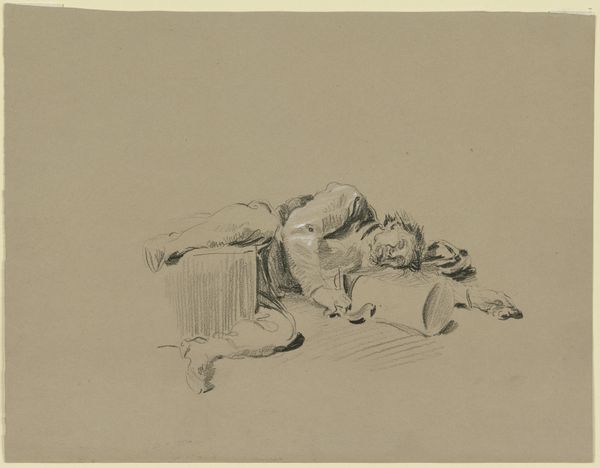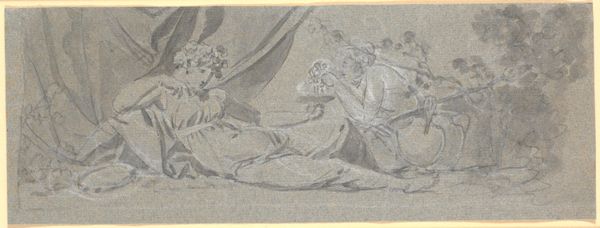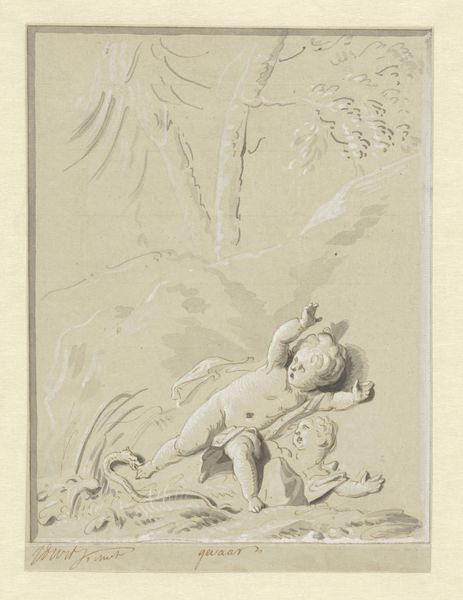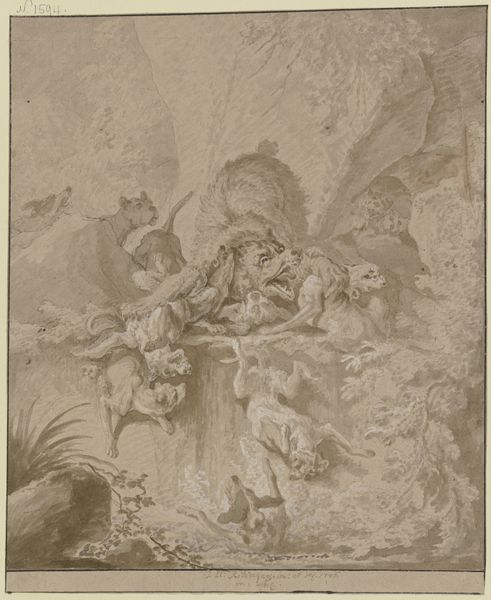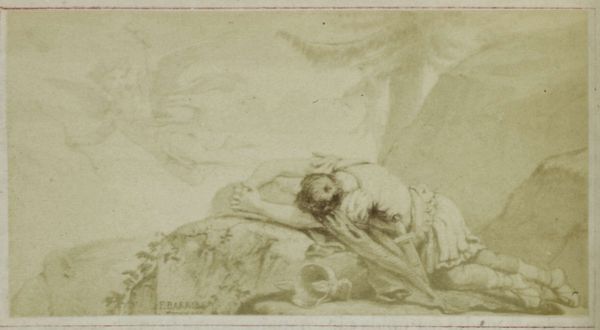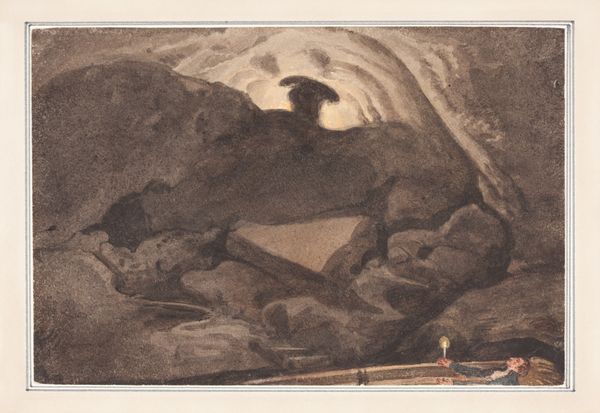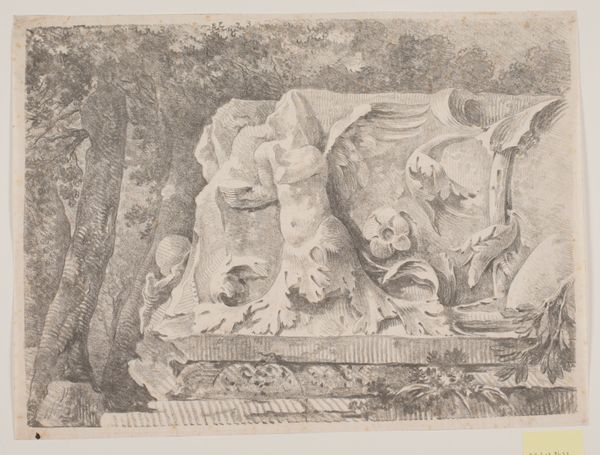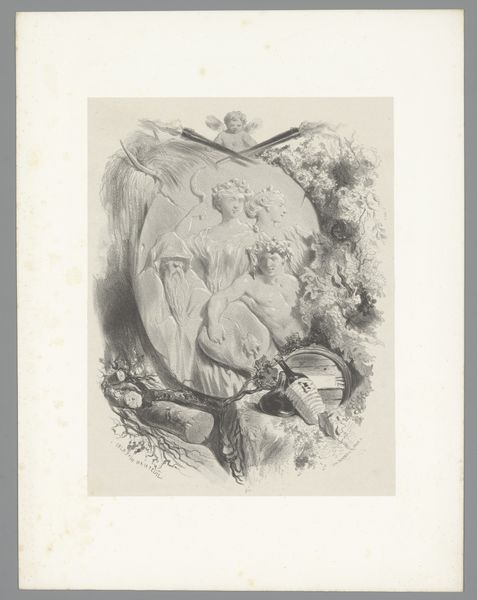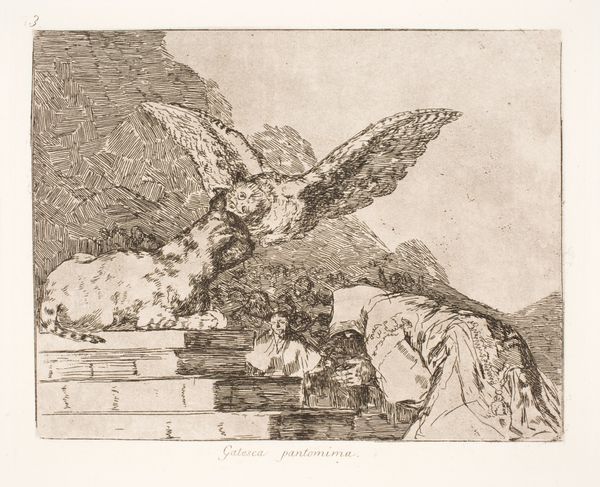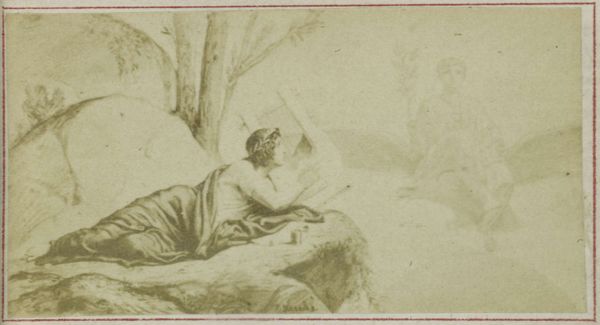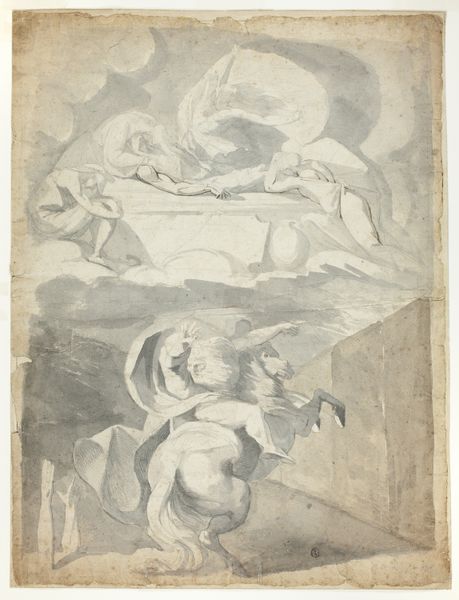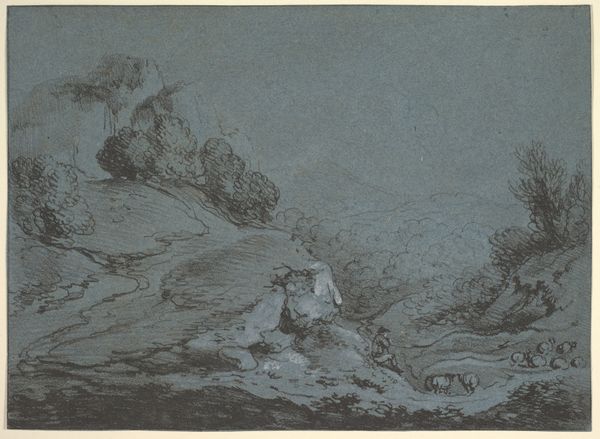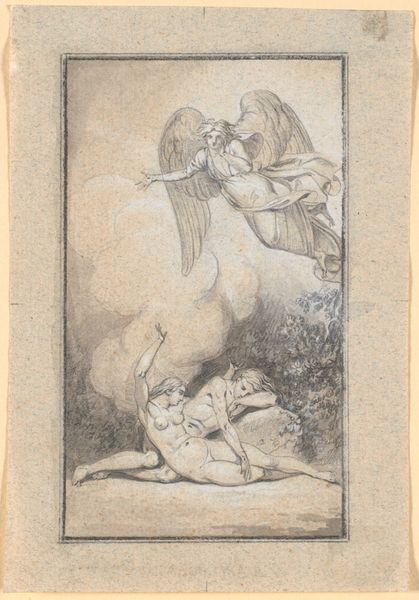
Udkast til dørstykke. En liggende kvindefigur med et neg i favnen 1743 - 1809
0:00
0:00
drawing, pencil
#
drawing
#
neoclacissism
#
figuration
#
pencil
#
history-painting
Dimensions: 143 mm (height) x 321 mm (width) (bladmaal)
Editor: Here we have Nicolai Abildgaard's pencil drawing, "Draft for an Overdoor. A reclining female figure with a sheaf in her arms," created sometime between 1743 and 1809. It has a somber quality; the grey pencil lines almost feel like a premonition. How do you interpret this work? Curator: I see this as a powerful, albeit subtle, commentary on gendered labor within a neoclassical framework. Consider the reclining female figure: she embodies a traditional symbol of fertility and abundance, literally holding a sheaf of wheat. But her posture also speaks of a certain weariness, a burden. Editor: A burden? Curator: Yes. Think about the role of women, particularly within agricultural societies. The neoclassical style often idealizes the female form, presenting it as passive and symbolic. However, Abildgaard’s work subtly acknowledges the labor, the physical toil often obscured by these idealized representations. Are we meant to read her pose as restful, or exhausted? What is the message regarding productivity and women's role in generating abundance? Editor: That's interesting. I hadn't considered the social implications of the woman's posture in relation to the symbolism of abundance. So, it's a commentary on the under-acknowledged female labor? Curator: Precisely. It invites us to consider the unseen labor, the contributions often erased from historical narratives. It subtly critiques the dominant ideology, even while employing its aesthetic language. It hints to the power dynamics between the ones that provide abundance and those that claim to cultivate abundance. Editor: I see it now. Looking at it from a feminist perspective, it brings up new questions about women and the expectation to nurture and generate life. Curator: Indeed. It allows us to engage with the piece beyond its surface beauty and to unpack the underlying social and political issues it implicitly addresses. Editor: That completely changes how I view the drawing! It's much more layered than I initially thought. Thanks for pointing out these elements!
Comments
No comments
Be the first to comment and join the conversation on the ultimate creative platform.
